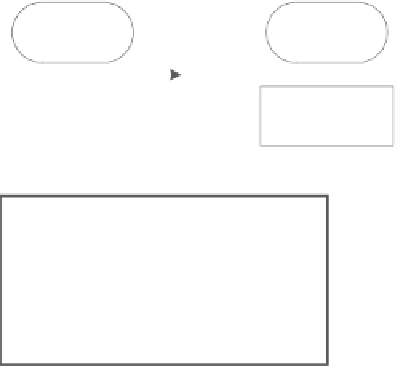Environmental Engineering Reference
In-Depth Information
Road Network Sub-system
Demand Sub-system
Link cost
function
Graph
Demand
Shopping car and
freight vehicle
O-D flows
Link and path
costs
Assignment Sub-system
Network
loading
Path choice
Link shopping car
and freight
vehicle flows
Performance and Impact Sub-system
Network
performances
Pollutant
emissions
Accident
prediction
Path and link
costs
Traffic pollutant
emissions
Road accidents
model
data
Fig. 1
Simulation system of direct scenario effects
• traffic pollutant emissions, using average emission functions (Gokhale and
Khare
2004
) that allow pollutant emissions to be estimated in relation to average
link kinematic variables (e.g. vehicle speed and acceleration); for example as
implemented within COPERT (COmputer Programme to calculate Emissions
from Road Transport; Eggleston et al.
2000
) and used in Filippi et al. (
2010
)to
estimate pollutant emissions in inner Rome;
• road accidents involving both passenger and freight vehicles, using accident
prediction models (APM); the probability of accidents are evaluated in relation
to vehicle flows and road characteristics, location and characteristics of infra-
structures (e.g. junction), control system (e.g. traffic lights, crosswalks), and
other standardization variables (e.g. reference period, environmental condi-
tions); examples may be found in Poul Greibe (
2003
) and Dietze et al. (
2005
).
The simulation system of direct scenario effects provides to analyze both
passenger and freight vehicle flows because both of them can be influenced by city
logistics measure implementation. Few studies have been developed on integrated
shopping and restocking, even if the demand models are the core of the simulation
system because they allow the impact of any measures on actors' behaviors to be

























Search WWH ::

Custom Search